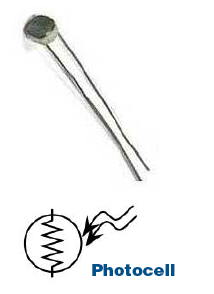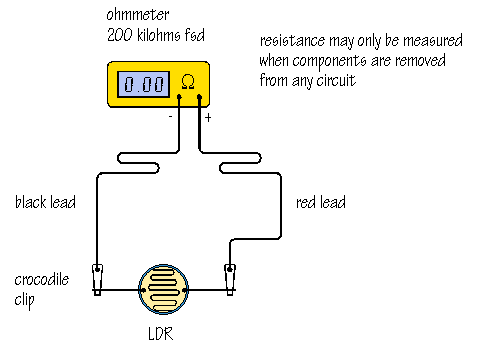Light Bits
Light bits are individual lesson plans that were conceived to be completed consecutively, but can be followed non-sequentially as well. What ties all these bits together is light.
Introduction to Light
What is light?
Light is a name for a range of
electromagnetic radiation that can be detected by the eye.
Electromagnetic radiation can be either described as waves or as particles. If you think of the radiation as a wave, the amplitude is the brightness and the the wavelength is responsible for the color. The angle at which it vibrates, is the polarization. According to the quantum theory electromagnetic radiation is particle based. These particles, or photons, are packets of energy which move at the speed of light. According to this theory of light, the brightness of the light is the number of photons, the color of the light is the energy contained in each photon, and four numbers (X, Y, Z and T) are the polarization.
 Image from library.thinkquest.org/27356/p_index.htm
Image from library.thinkquest.org/27356/p_index.htm
The
electromagnetic spectrum describes electromagnetic radiation of all wavelengths, and includes radio waves, microwaves, infrared, visible light, ultraviolet, x rays, gamma rays.
The different wavelengths and energies of electromagnetic radiation allow the types of radiation to have different effects on matter. Radio waves, for example, have such a long wave length and low energy that you cannot visually detect them or even feel them and they pass through our bodies. To capture and amplify radio waves, you need a metal antenna with special electronics. Infrared radiation is of wavelengths that are easily absorbed by matter and turned into heat, and x-rays pass through soft tissue but are stopped by bone.
Flashlight
- Soldering
- Reading Schematics
- Sketching
- 3D modeling: Introduction to TinkerCad and 123D Design
- Extruding SVGs
- 3D printing
Lithopanes are three-dimensional images in which the lighter elements of the photo are thin, while the darker elements are thicker. When not exposed to light, a lithopane does not look like much. The full effect doesn't appear until it is held up to the light.
Customizable Lithopanes makes the process of transforming your 2D images to 3D simple.
Lithopanes
- Sketching
- 3D modeling: Introduction to TinkerCad and 123D Design
- 3D printing
What is an LDR
LDR stands for
Light Dependent Resistor and is also known as a
Cadmium Sulphide (CdS) cell, a
photoresistor or a
photocell. An LDR is made of a high resistance semiconductor. It is similar to a normal resistor with the exception that a normal resistor has a fixed value and the LDR's resistance is dependent on ambient light, the light that exists in the LDR's vicinity. So a photocell is a variable resistor, which produces a resistance proportional to the amount of light it senses. It is very hard to use an LDR to determine the exact amount of light in a given setting but these components are great for determining light in a broader sense, whether it is dark or light. There are two basic circuits that use LDRs:
- circuits activated by darkness
- circuits activated by light

 Image from Adafruit
Image from Adafruit
To measure the resistance of an LDR you will need a multimeter:
 Image from www.doctronics.co.uk
Image from www.doctronics.co.uk
- Write down the resistance value you measure when the LDR is exposed to the room lights
- Cover the LDR with your hand so that it is in the dak. The resistance of the LDR will increase. Write down the new resistance value
- To create a voltage divider you would pick a fixed resistor in the middle of the the values you wrote down
Night Light
- Soldering
- Reading Schematics
- Sketching
- 3D modeling
- 3D printing
Answer these questions:
- How does an LDR work?
- How does your nightlight work?
- If you could design any kind of enclosure for your night light, what would it be?
- What kind of compromises did/will you make
Light Detector
Light Sensitive Alarm
Design housing for the Light Sensitive Alarm
Introduction to 3D printing
Documentation
Do the following:
- Provide an answer to this question: How does your light sensitive alarm work?
- Include your work from the Design Process.
- Provide an answer to this question: What kind of compromises did/ will you make?
Design the Interior of a Music Box
Music Box
Design a music box
- Reading Schematics
- Sketching
- 123D Design
- OpenSCAD
- Tinkercad
- 3D Printing
 Image from library.thinkquest.org/27356/p_index.htm
Image from library.thinkquest.org/27356/p_index.htm



